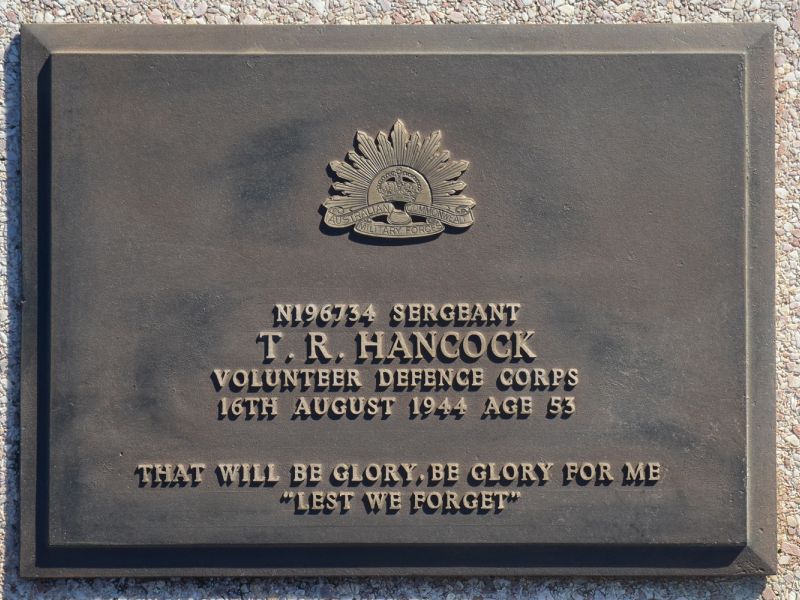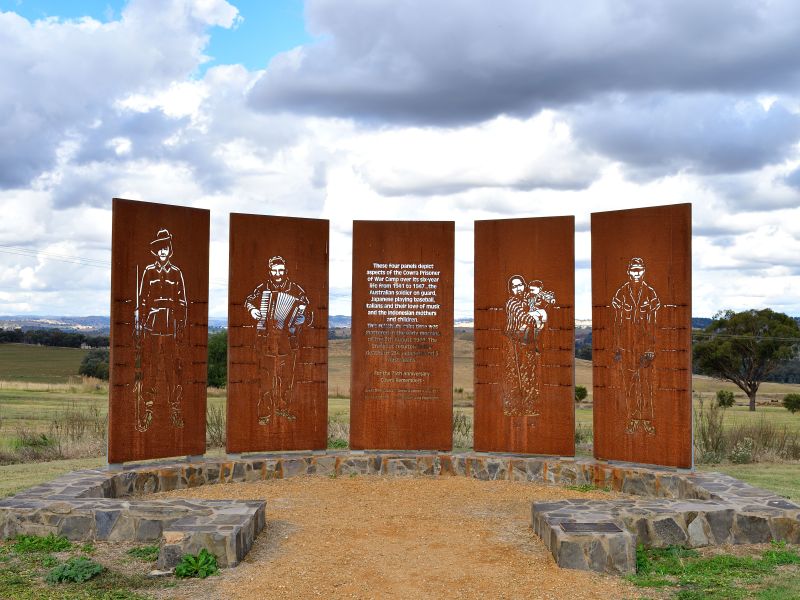The Fifth Australian
The central panel on the Cowra POW Breakout 75th Anniversary Art Installation tells us that the Breakout resulted in the deaths of 234 Japanese and five Australians. Many people will have heard of Privates Benjamin Gower Hardy and Ralph Jones, each posthumously awarded the George Cross for their outstanding gallantry and devotion to duty whilst manning their Vickers machine gun, until they were overwhelmed and killed by escaping Japanese prisoners of war. Some will also know the story of Lieutenant Harry Doncaster, killed by escaped Japanese prisoners in the late afternoon of the 5th of August 1944. There might even be a few who know of Private Charles Henry Shepherd, the partially-blind guard who was stabbed to death by an escaping prisoner during the breakout. But who was the fifth Australian the panel refers to?
Sergeant Thomas Roy Hancock was a member of the 26th Battalion of the Volunteer Defence Corps (VDC), sometimes referred to as “Australia’s Home Guard”. The VDC was made up mostly of those soldiers who were too old for active military service, or who were in reserved occupations. Thomas Hancock was 53 years old.
After the escape of hundreds of Japanese prisoners-of-war, local authorities became concerned about the security of significant infrastructure in the district. The local Engineer of the Department of Railways at Blayney, foreseeing possible danger to certain bridges and approaches to railway stations from Athol to Carcoar, and from Blayney as far as Wombiana, requested that members of the local VDC battalion patrol those areas.
In the early evening of the 7th of August, two days after the breakout, Sergeant Hancock and other members of ‘C’ Company of the26th Battalion, were assembling for patrol duty. One member was removing his rifle from their vehicle when it discharged, the bullet wounding Sergeant Hancock. Hancock was quickly attended to and conveyed to Blayney District Hospital and given immediate surgical treatment. Unfortunately, he developed septicaemia and subsequently died nine days later. The Court of Inquiry into Hancock’s death later established that it was brought about indirectly by the escape of the Japanese prisoners-of-war, whilst on duty authorised by the Commanding Officer of the 26th Battalion. The cause of death was recorded as “…due to the gunshot injury received on 7 Aug 44, together with subsequent septicaemia.”
The family, who were with him when he died, quickly arranged a funeral because the septicaemia caused rapid decomposition. He was buried in the Hancock family section of the Blayney cemetery.
Sergeant Thomas Roy Hancock, the fifth Australian to die as a result of the Cowra Breakout, left behind his widow Hattie, two adult children, Coral and William, and an eleven-year-old son John.
Sources:
NAA SP459/1, 445/1/6700 Court of Inquiry – Death of N196734 Sergeant Hancock, Thomas Roy
A Town at War: Stories from Cowra during WWII – Graham Apthorpe

 Henry C Moulds
Henry C Moulds